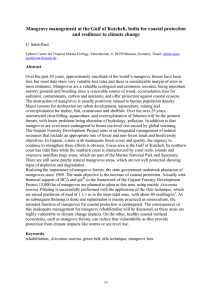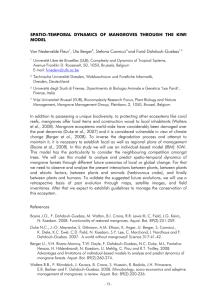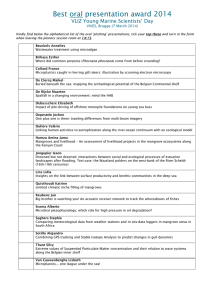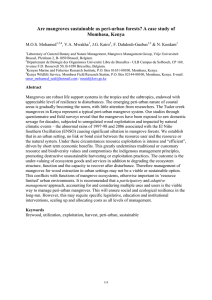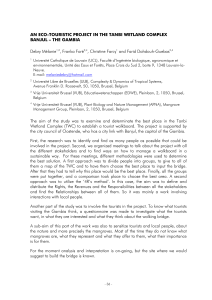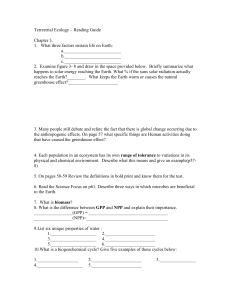Roots in the sea
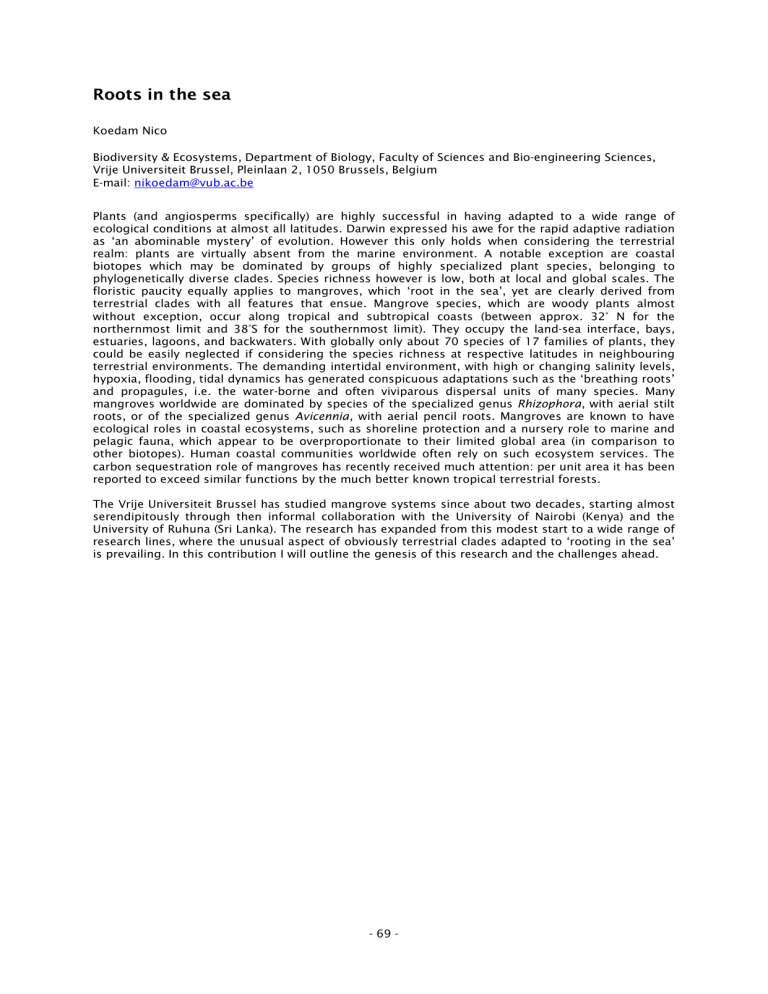
Roots in the sea
Koedam Nico
Biodiversity & Ecosystems, Department of Biology, Faculty of Sciences and Bio-engineering Sciences,
Vrije Universiteit Brussel, Pleinlaan 2, 1050 Brussels, Belgium
E-mail: nikoedam@vub.ac.be
Plants (and angiosperms specifically) are highly successful in having adapted to a wide range of ecological conditions at almost all latitudes. Darwin expressed his awe for the rapid adaptive radiation as ‘an abominable mystery’ of evolution. However this only holds when considering the terrestrial realm: plants are virtually absent from the marine environment. A notable exception are coastal biotopes which may be dominated by groups of highly specialized plant species, belonging to phylogenetically diverse clades. Species richness however is low, both at local and global scales. The floristic paucity equally applies to mangroves, which ‘root in the sea’, yet are clearly derived from terrestrial clades with all features that ensue. Mangrove species, which are woody plants almost without exception, occur along tropical and subtropical coasts (between approx. 32° N for the northernmost limit and 38°S for the southernmost limit). They occupy the land-sea interface, bays, estuaries, lagoons, and backwaters. With globally only about 70 species of 17 families of plants, they could be easily neglected if considering the species richness at respective latitudes in neighbouring terrestrial environments. The demanding intertidal environment, with high or changing salinity levels, hypoxia, flooding, tidal dynamics has generated conspicuous adaptations such as the ‘breathing roots’ and propagules, i.e. the water-borne and often viviparous dispersal units of many species. Many mangroves worldwide are dominated by species of the specialized genus Rhizophora , with aerial stilt roots, or of the specialized genus Avicennia , with aerial pencil roots. Mangroves are known to have ecological roles in coastal ecosystems, such as shoreline protection and a nursery role to marine and pelagic fauna, which appear to be overproportionate to their limited global area (in comparison to other biotopes). Human coastal communities worldwide often rely on such ecosystem services. The carbon sequestration role of mangroves has recently received much attention: per unit area it has been reported to exceed similar functions by the much better known tropical terrestrial forests.
The Vrije Universiteit Brussel has studied mangrove systems since about two decades, starting almost serendipitously through then informal collaboration with the University of Nairobi (Kenya) and the
University of Ruhuna (Sri Lanka). The research has expanded from this modest start to a wide range of research lines, where the unusual aspect of obviously terrestrial clades adapted to ‘rooting in the sea’ is prevailing. In this contribution I will outline the genesis of this research and the challenges ahead.
- 69 -
